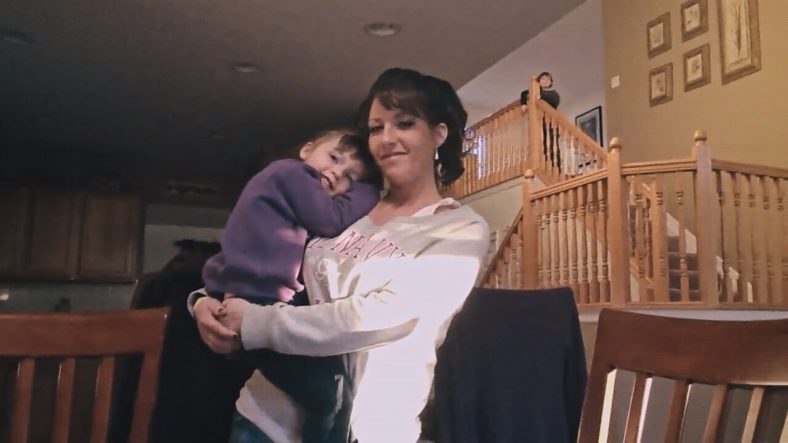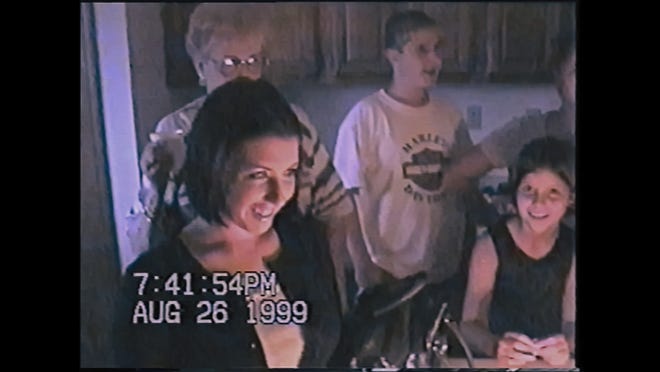This Harrowing True Crime Documentary Is A Difficult But Necessary Watch

The horrors of domestic abuse usually take place behind closed doors, during drunken late nights between two people that have gradually, over time, become dangerous for each other. There may be thin walls, someone may hear the yelling and screaming. More often than not, the violence is contained and dolled out in private, with any calls for help falling on deaf ears.
When director Patricia Gillespie’s sobering documentary The Fire That Took Her first came to my attention, I immediately thought the unspeakable crime committed against Judy Malinowski occurred in that same frightening, inescapable bubble. But her perverse mistreatment didn’t happen in the witching hours when she was all alone with her attacker. Instead, Judy’s abusive boyfriend Michael Slager poured gasoline and set her on fire in broad daylight.
Footage captured by a nearby ATM machine clearly showed the crime, which took place in August 2015 behind a gas station at a popular intersection in the suburbs of Columbus, Ohio. Judy, a 31-year-old mother of two, became engulfed in the flames so quickly that the images look like she’s committing an act of self-immolation to protest an unjust war or bring attention to the effects of climate change. Visually, that’s the only thing that compares to how shocking the moment is to watch play out on screen.
Also Read: ‘Dear Zachary’: The Most Devastating True Crime Documentary Ever Made
Bravely, Gillespie doesn’t shy away from showing that raw footage. She also didn’t capitulate to requests that Judy’s face should be blurred to lessen the blow of her injuries on unsuspecting audiences. Miraculously, Judy survived the attack and endured a tremendous amount of pain to tell her story. And her uncensored agony is there to witness in close-up graphic detail.
Given mere hours to live, Judy managed to survive almost two years as her family struggled to pay the inordinate amount of hospital bills that were racking up. Judy’s God-fearing mother Bonnie is interviewed throughout The Fire That Took Her, explaining in one heartbreaking scene that the state of Ohio would not help cover the costs because an illegal substance was found in her daughter’s body at the time of her attack. That fact spins Judy’s story in an entirely different direction that points out the failures of the justice system and shines a much-needed light on the private hell of addiction.

In her new stark reality stuck in a hospital bed, Judy really leaves one system of control for another. The defense attorney for Slager manages to wiggle his way into a plea where a man who was recorded setting his girlfriend on fire only receives 11 years in prison. As a viewer, it’s maddening; as a family fighting for their child, it’s borderline criminal. The story could have ended there. Instead, a new precedent is set where Judy becomes the first person in the United States to ever testify at their own murder trial.
Also Read: This Sinister True Crime Documentary Sees An Online Love Triangle Turn Deadly
It would be a disservice to Judy and her family to warn viewers about just how graphic some scenes are in The Fire That Took Her. That’s the point. Facing that pain is just one small way that we, the audience, can pay our respects. That said, it’s deeply unsettling to watch as Judy is forced to come down from her pain medication to be considered “of sound mind” to testify against her killer. What’s sadder to witness is the extraordinary lengths a woman has to endure in order to be taken at her word in such an obvious open-and-shut domestic abuse case.
Gillespie and editor Emiliano Battista manage to structure Judy and her family’s ordeal in a way that shows their resilience and their faults. In chronicling such an extreme act of brutality, the crime itself could have overshadowed everything else. Instead, the focus deals largely with the aftermath that happens in the wake of an unspeakable tragedy.
In the interest of fairness, Gillespie was planning on speaking with Judy’s attacker to hear his side of the story (where he claimed a lit cigarette was the real culprit). The request was denied multiple times because Slager, who had a rap sheet a mile long, kept managing to get himself in trouble even when he was behind bars.
Uniquely, there aren’t any true crime stories that have led to real change in the law and set such a unique precedent in the courtroom. The Fire That Took Her (now streaming on Paramount+) is a harrowing watch that should inspire you to rethink a potentially toxic relationship and make you want to call your Congressman.
Categorized:Editorials News Reviews

